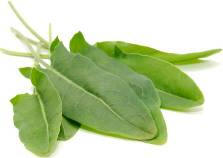Piment d’Espelette
A powder made from d’Espelette chillies that are grown in the Basque (French) village of Espelette.
The village is famous for its chillies which can be seen strung up on the houses to dry.
The chillies are mild but have a spicy flavour.

Cinnamon
Cinnamon is the oldest known spice, being referenced in written text in the 5th century. It actually comes from pieces of tree bark that have been sun dried. After drying, the bark is cut into strips or ground into a powder. There are a variety of cinnamon types, and each has a slightly different flavour as well as a different volatile oil content that determines its intensity. Cinnamon is used in baking and can also be found in an assortment of savoury dishes.
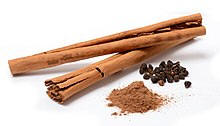
Cardamom
There are two main types
of cardamom:
• True or green cardamom (or when bleached, white cardamom) comes from
the species Elettaria Cardamomum and is grown from India to Malaysia.
• Black cardamom, also known as brown, greater, large, longer, or Nepal
cardamom, comes from species Amomum Subulatum and is native to the
eastern Himalayas and mostly cultivated in Eastern Nepal, Sikkim, and
parts of the Darjeeling district in West Bengal in India and southern
Bhutan.
It has a strong, unique taste, with an intensely aromatic, resinous
fragrance. Black cardamom has a distinctly more smoky, though not
bitter, aroma, with a coolness some consider similar to mint.
It is a common ingredient in Indian cooking. In Asia, both types of
cardamom are widely used in both sweet and savoury dishes. It is also
included in aromatic bitters, gin and herbal teas.
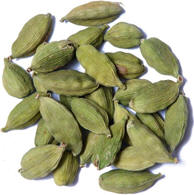
Ginger
Ginger is a flowering plant whose rhizome is widely used as a spice. It is a herbaceous perennial which grows annual pseudostems (false stems made of the rolled bases of leaves) about a metre tall bearing narrow leaf blades. The inflorescences bear pale yellow with purple flowers and arise directly from the rhizome on separate shoots. Ginger originated from South-East Asia.
Ginger is used as a spice, particularly in Far-East cooking, as a flavouring in certain drinks (notably ginger beer and ginger wine) and as a confectionary. It is regarded as having stomach-settling effects.
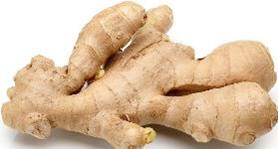
Nutmeg (and mace)
Nutmeg is the seed of an evergreen tree, Myristica fragrans, native to the Banda Islands in the Moluccas (or Spice Islands) of Indonesia. The covering of the seed becomes the spice mace.
Nutmeg and mace have similar sensory qualities, with nutmeg having a slightly sweeter and mace a more delicate flavour. Mace is often preferred in light dishes for the bright orange, saffron-like hue it imparts. Nutmeg is used for flavouring many dishes – particulaly those originating in the Far East.
An essential oil obtained by steam distillation of ground nutmeg is used in the perfumery and pharmaceutical industries.
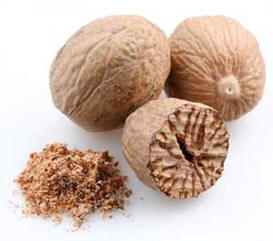
Turmeric
Turmeric is a flowering plant of the ginger family, Zingiberaceae, the roots of which are used in cooking. The plant is rhizomatous, herbaceous, and perennial and is native to the Indian subcontinent and Southeast Asia. It requires temperatures between 20 and 30°C and a considerable amount of rainfall to thrive. Plants are gathered each year for their rhizomes which are often dried and ground to a powder.
Turmeric has a stong yellow colour. As well be being used in cooking, it is also used as a dye, as a traditional medicine and as an acidity indicator like litmus paper.


Cumin
Cumin is a flowering plant in the family Apiaceae, native to the Middle East and stretching east to India. Its seeds are used in the cuisines of many cultures in both whole and ground form.
Cumin is used mainly where highly spiced foods are preferred. It features in Indian, Eastern, Middle Eastern, Mexican, Portuguese and Spanish cookery. I t is an ingredient of most curry powders and many savoury spice mixtures and is used in stews, grills – especially lamb – and chicken dishes. It gives bite to plain rice and to beans and cakes. Small amounts can be usefully used in aubergine and kidney bean dishes.
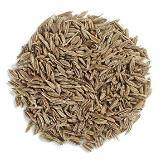
Tarragon
Tarragon is a species of perennial herb in the sunflower family. It is widespread in the wild across much of Eurasia and North America and is cultivated for culinary and medicinal purposes.
There are several varieties of tarragon. French tarragon is the variety used for cooking and is not grown from seed, as the flowers are sterile; instead it is propagated by root division.
Russian tarragon can be grown from seed but is much weaker in flavour when compared to the French variety
Spanish tarragon is a better substitute for French tarragon and is also known as Mexican mint marigold, Mexican tarragon, Texas tarragon, or winter tarragon.
Tarragon is particularly good with chicken and fish (mackerel) and is also used widely in sauces, including Béarnaise sauce.
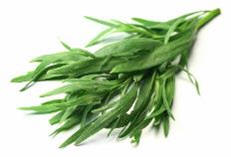
Parsley
Parsley is grown as an annual or biannual for its flavoursome leaves that are used as a garnish or chopped into sauces, butters, dressings and stuffings.
It comes in two basic forms: a curly-leafed and flat-leafed. Although curly-leafed parsley looks great as a garnish and has textured tactile leaves, flat-leaded parsley has a stronger taste.
It has a taproot that can be used as a stored food over the winter.
Parsley is said to have several health benefits:
· Reduce cancer risk. Eating parsley can reduce the risk of cancers such as breast, digestive tract, skin and prostate.
· Improve immune function. Parsley may help to modulate the immune system.
· Beating inflammation.
· Fighting disease.
· Protecting your blood vessels.
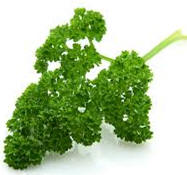
Oregano
Oregano is a close relative of Marjoram, is sometimes called “wild marjoram” and is native to temperate Western and Southwestern Eurasia and the Mediterranean region.
It is widely used in the Maditerranean region but is most reminiscent of Greek cookery.
It is mostly used in a dried form to flavour meat, fish, vegetables and salads.
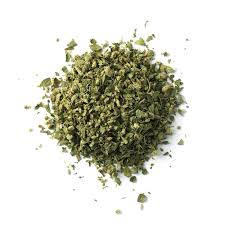
Marjoram
Marjoram is generally used fresh, unlike its close relation oregano, whose leaves are more likely to be dried and stored. Most marjorams also have a more delicate flavour than oregano.
Marjoram usually has dark green leaves but it does come in different colours from green to golden yellow and with different growing vigours.
Leaves and flowering sprigs are popular in Greek and Italian meat dishes, soups, stuffings, tomato sauces and pasta, where they are best used towards the end of the cooking process. Leaves are also used to flavour oil and vinegar.
Another fact about marjoram is that its flowers are loved by honey bees. It does not take a lot of space and is easy to grow and propogate.
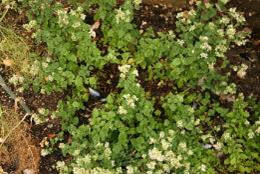
Coriander
Coriander is an annual herb in the family Apiaceae. All parts of the plant are edible, but the fresh leaves and the dried seeds are the parts most traditionally used in cooking.
It has an appearance and flavour somewhat like parsley but the taste is stronger and has a distinctly Middle-Eastern suggestion.
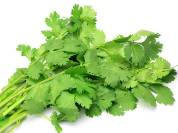
Bay
Bay tree is an evergreen shrub suitable for containers or growing in the ground. It is native to the Mediterranean.
Bay leaves can be used fresh or dried and are used in cooking to give a fragrant flavour to soups, stews and other dishes.
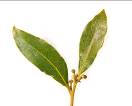
Dill
Dill is similar in appearence to fennel but has a less pungent and sweeter flavour.
Fresh and dried dill leaves (sometimes called "dill weed" to distinguish it from dill seed) are widely used as herbs in cooking. Although is has other uses, it is uniquely suited to making gravad lax and is excellent in mayonnaise with honey which is a garnish for gravad lax.
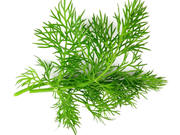
Mint
Mints are aromatic, almost exclusively perennial herbs. They have wide-spreading underground and overground stolons and erect, square, branched stems. They are found widely across the world. There are about 15 different varieties.
The leaves have a warm, fresh, aromatic, sweet flavour with a cool aftertaste. They are used in teas, beverages, jellies, syrups, sweets, and ice creams. Mint is used in the cooking of lamb dishes and as an accompaniment in the form of mint sauce or mint jelly It can also enhance a salad and goes well with orange. It is also an essential garnish for a glass of Pimms.
Mint is better used fresh. The flavour changes significantly with drying, freezing and cooking.
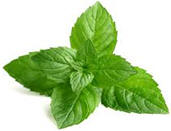
Savory
Savory is an arromatic herb with a flavour somewhere between thyme and marjoram. In fact there are two varieties, Summer Savory and Winter Savory. The former is an annual plant and the latter a perennial. Summer Savory is the most common used in cooking because the winter variety has a slightly more bitter flavour.
Savory is quite (extremely) difficult to find, but it is a good all-round herb for flavouring meats, poultry, fish etc.

Thyme
Thyme is an aromatic perennial evergreen herb with culinary, medicinal, and ornamental uses. Thyme is a member of the mint family and a relative of oregano.
It has various growing habits. In its most usual form it is a small shrubby bush but it creeps close to the ground. It is usually green but there are yellow and white varieties.
It also has various flavours, one of which is a lemon flavour.
Fresh or dried, thyme leaves and flowers give flavour to casseroles, soups, stews, and sautéed vegetables. Chopped fresh or dried and combined with parsley and bay leaves, thyme is included in the French combination of herbs called bouquet garni, used to season stock, stews, and soups. Eggs, meats, fish, salads and bean dishes are all enhanced with a sprinkling of thyme.
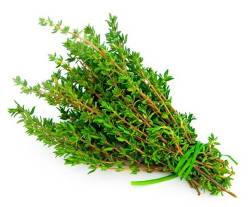
Rosemary
Rosemary is a robust and most versatile herb with a flavour that complements a wide variety of dishes and ingredients. Native to the Mediterranean, its aromatict green leaves resemble pine needles. The plant is an evergreen shrub, so the leaves are available fresh all year round.
In cooking rosemary goes particularly well with lamb, pork and veal (in fact it is excellent with barbecued, grilled or stewed meat). It gives dishes a particularly Mediterranean flavour.
Rosemary is said to have medicinal benefits that include boosting memory, improving mood, reducing inflammation, relieving pain, protecting the immune system, stimulating circulation, detoxification of the body, protecting the body from bacterial infections, preventing premature ageing and healing skin conditions.

Sorrel
Sorrel is already growing well with soup-making quantities avaiable.
Common sorrel or garden sorrel (Rumex acetosa), often simply called sorrel, is a perennial herb in the family Polygonaceae. Other names for sorrel include spinach dock and narrow-leaved dock. It is a common plant in grassland habitats and is cultivated as a garden herb or salad vegetable (pot herb).
It contains oxalic acid which gives it a sharp bitter taste.
It is used to make soup and sauces. It is also good added in small quantities to rhubarb and to spinach
